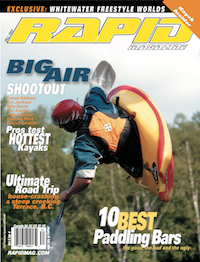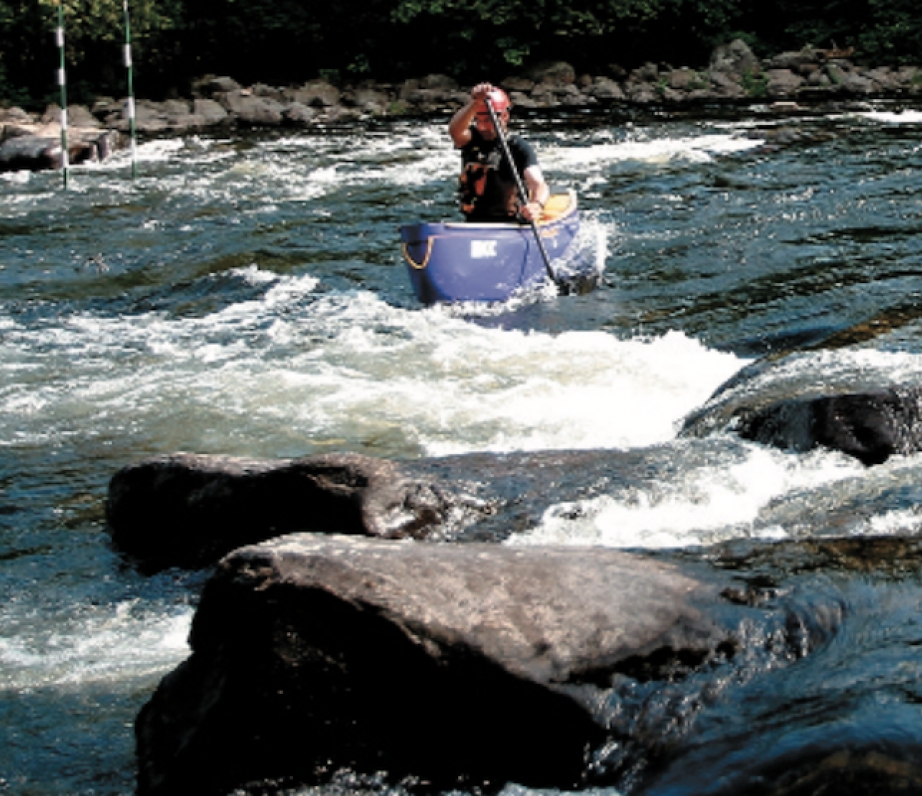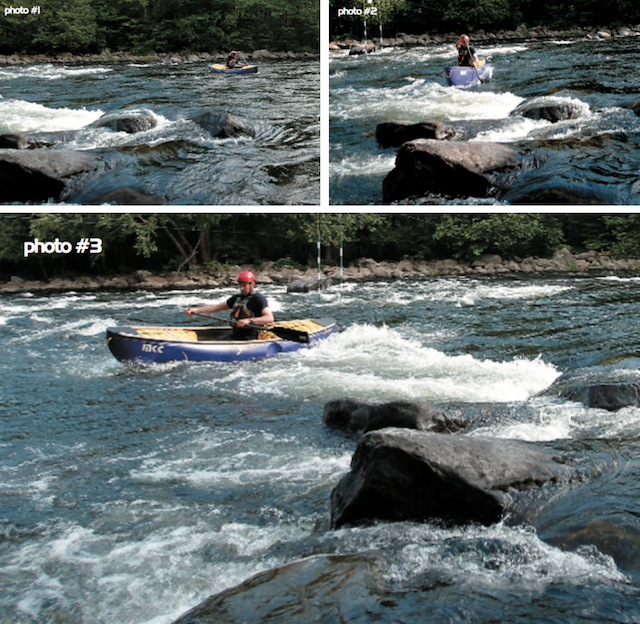Catching eddies is easier when approaching the eddy pool from across the river.
Approaching eddies from the side, you generate the momentum needed to cut across eddy lines more effectively than when you approach from upstream. Also, when you ferry across the river toward the eddy line, you can more easily achieve the best entry angle for paddling into the eddy pool.
Too often, paddlers descend a river by simply pointing their canoe downstream. Then, when they wish to catch an eddy, they can neither angle the boat quickly enough to cross the eddy line, nor generate the necessary speed to cross over the boils and whirlpools that make up the eddy line. You can solve these problems by paddling across the river, moving laterally toward the eddy pool. The resulting speed and angle will drive the canoe across the boils and into the pool.
Begin by positioning your boat across the river from your target eddy. Begin your approach by ferrying across the current—moving across the river reduces unnecessary downstream momentum. As the ferry progresses, your lateral momentum toward the eddy pool will begin to build (photo #1).
Once you are within a couple of boat lengths of the eddy line, open your angle so the bow is aimed toward to the top of the eddy (photo #2). Hitting eddies from the side at 90 degrees contradicts the “45-degree rule” you may have been taught, but it works and is done by all advanced paddlers. The lateral momentum and open angle drives you across the eddy line into a snappy, tight eddy turn—at 90 degrees the canoe has less distance to turn to complete the manoeuvre pointing upstream. However, if the eddy line is very wide, you may still want to point the canoe slightly downstream to help it cross and carve a powerful arc into the eddy (photo #3). The lateral momentum created by the ferry carries your canoe across the eddy line and into the pool.
By ferrying across the river toward eddy pools, you create sideways momentum that helps drive the canoe across difficult eddy lines. Moving from one side of a river to the other during your descent gives you the opportunity to use lateral momentum to enter eddy pools and maintain maximum control of your descent down the rapid.
Andrew Westwood is a regular contributor to Rapid and is an open canoe instructor at the Madawaska Kanu Centre.






